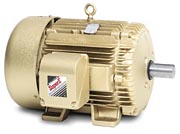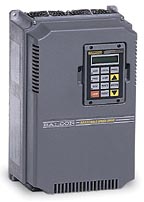There are a number of options available to reduce electrical power consumption associated with spray finishing operations. Here are four ways to significantly improve the energy efficiency of the ubiquitous liquid spray booth ventilation system.

1.
Start by upgrading the fan motor. Replace it with one meeting the newer, premium energy efficient electric motor standards. These motors are constructed using heavier wire, better grades of steel, thinner and longer laminations and better bearings. The efficiency increase is particularly significant in the lower horsepower range. For example, a typical filter booth is equipped with a 5 hp, 3-phase motor. The standard efficiency motor supplied with the booth has a power conversion efficiency of 84 percent; while its premium efficiency cousin will have a power conversion efficiency of 89.6 percent. According to the U.S. Department of Energy (DOE) the cost of the electrical power consumed by an industrial motor over its useful life is 30 times its initial purchase price. The cost premium for an energy efficient motor is frequently recovered in less than a year.2.
Resist the temptation to oversize the fan motor. Oversizing the motor adds cost in two ways. The initial purchase cost will be higher and the actual operating energy efficiency will be lower, needlessly inflating its power consumption. Consult NEMA (the National Association of Electrical Manufacturers) or the motor manufacturer's guidelines when sizing a replacement motor for your booth. Usual practice is to operate motors in their most efficient range - 75 percent to 100 percent of their full load rating.
3.
Replace inefficient, power consuming, mechanical control devices, such as variable speed pulleys, dampers and bypass vents with a variable frequency drive (VFD) designed to drive your new energy efficiency motor. The DOE estimates industrial motor energy consumption could be reduced by up to 18 percent if companies replaced their motors with high efficiency ones and powered them with energy efficient electronic variable frequency drives.4.
Consider upgrading the spray booth to include energy efficient, closed-loop, constant airflow control technology. This new control package includes both an energy efficient motor and a variable frequency drive. The closed-loop system automatically maintains the preset exhaust airflow as your booth's arresting filters load with overspray by monitoring the actual exhaust airflow and adjusting the motor rotational speed to maintain it at the preset level. The system consumes only as much power as is needed to maintain the preset exhaust airflow at any given moment in time. An added benefit of upgrading the booth airflow control system is gaining a stable environment for the spray finishing operation the booth houses. Practitioners of six sigma and other popular continuous improvement disciplines find constant booth airflow enables them to fine tune the entire spray application operation, further reducing the line's operating cost.Because industry consumes more than one-third of all the energy used in the United States and nearly two-thirds of industry's usage is consumed by electric motors, upgrading all industrial motors to energy efficient ones and, where appropriate, equipping them with variable frequency drives has the potential to reduce our national energy consumption by 4 percent. There are two compelling reasons to upgrade spray booths to include energy efficient motors driven by variable frequency drives: energy conservation and improved process control.
As Ben Franklin reportedly said, "Don't be penny wise and pound foolish." When it comes to selecting motors and motor controls for your industrial liquid paint spray booths, spending a little more for energy efficient motors and VFDs will significantly reduce your finishing process energy consumption and operating cost. If economists' energy price projections are close to correct, the payback period for these premium features will be growing ever shorter in the days ahead.

Report Abusive Comment